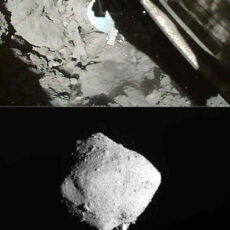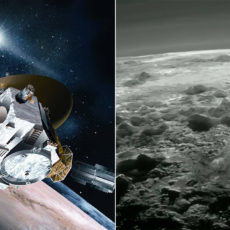
On Christmas Eve 2024, NASA’s Parker Solar Probe did something no human-made object had ever done before: it flew just 3.8 million miles from the Sun’s surface, blazing through the star’s corona at 430,000 miles per hour.
Equipped with the Wide-Field Imager for Solar Probe (WISPR) camera, the spacecraft captured the Sun’s corona in stunning detail. The images show a wild scene: solar wind streams out, coronal mass ejections (CMEs) crashing and merging. One image catches three CMEs, their yellow-tinted plumes twisting together as they burst from the Sun. “We’re seeing the CMEs basically piling up on top of each other,” said Angelos Vourlidas, WISPR’s lead scientist at Johns Hopkins Applied Physics Laboratory.
- LEGO NASA Space Set - This adult LEGO set features the Space Shuttle Discovery and the Hubble Space Telescope from NASA’s 1990 STS-31 mission,...
- Solar System Exploration - Unlock the mysteries of our solar system with this engaging 2,354-piece project, packed with authentic details and...
- Shuttle Features Galore - The space shuttle model has an opening payload bay, retractable landing gear, opening cockpit, moving elevons, space arm,...
The images show the Sun’s magnetic chaos up close. The probe caught the heliospheric current sheet, the boundary where the Sun’s magnetic field flips from north to south. This invisible line, traced by plasma, drives space weather and we’re seeing it in detail for the first time ever. The footage also shows Kelvin-Helmholtz instabilities – wavy patterns where solar flows collide, forming turbulent eddies. “We are seeing where space weather threats to Earth begin, with our eyes, not just with models,” said Nicky Fox, associate administrator for NASA’s Science Mission Directorate.
The flyby also confirmed two types of slow solar wind, a particle stream moving at 220 miles per second compared to the faster kind. Scientists had long guessed at Alfvénic and non-Alfvénic slow solar wind, defined by their magnetic properties. The Alfvénic kind has small magnetic zig-zags called switchbacks, the non-Alfvénic kind doesn’t. Parker’s close-up views nailed down this split, and early signs point to the Alfvénic wind coming from coronal holes – cooler, darker spots on the Sun – while the non-Alfvénic wind may come from helmet streamers – giant loops of hot plasma connecting active solar regions.
For perspective, imagine Earth and the Sun a foot apart – Parker Solar Probe was half an inch from the Sun’s surface in December. That’s close. It required engineering genius. The heat shield, a carbon composite marvel, withstood 2,500°F to protect the instruments from the corona’s million degree plasma. This allowed WISPR’s radiation-hardened cameras to capture visible light images that would be what a human eye would see if anyone could survive the trip.










